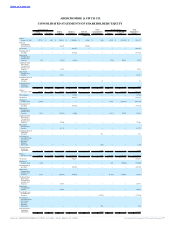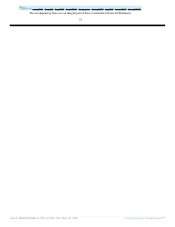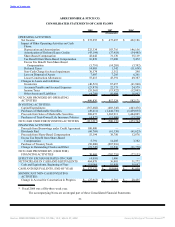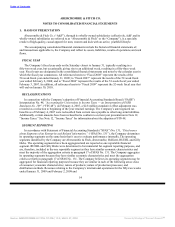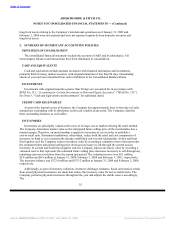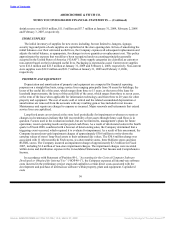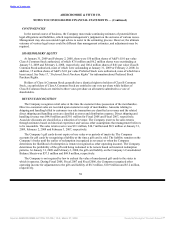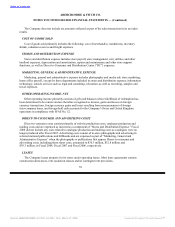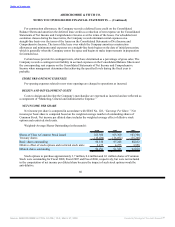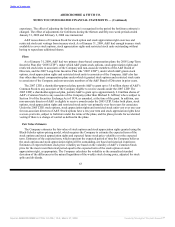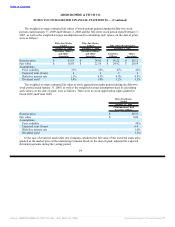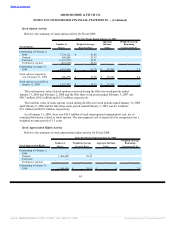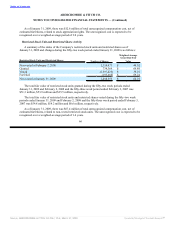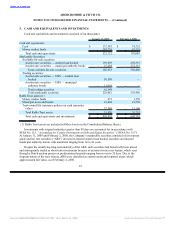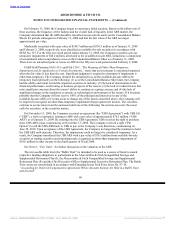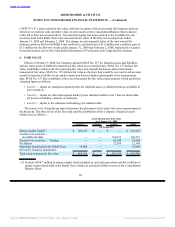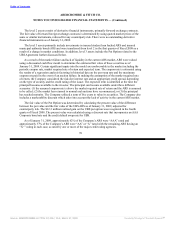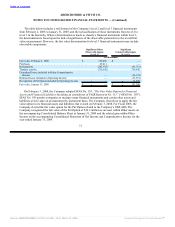Abercrombie & Fitch 2008 Annual Report Download - page 65
Download and view the complete annual report
Please find page 65 of the 2008 Abercrombie & Fitch annual report below. You can navigate through the pages in the report by either clicking on the pages listed below, or by using the keyword search tool below to find specific information within the annual report.
Table of Contents
ABERCROMBIE & FITCH CO.
NOTES TO CONSOLIDATED FINANCIAL STATEMENTS — (Continued)
SHARE-BASED COMPENSATION
The Company accounts for share-based compensation under the provisions of SFAS No. 123 (revised
2004), “Share-Based Payment” (“SFAS No. 123(R)”). See Note 4, “Share-Based Compensation” for
additional detail.
USE OF ESTIMATES IN THE PREPARATION OF FINANCIAL STATEMENTS
The preparation of financial statements in accordance with GAAP requires management to make
estimates and assumptions that affect the reported amounts of assets and liabilities as of the date of the
financial statements and the reported amounts of revenues and expenses during the reporting period. Since
actual results may differ from those estimates, the Company revises its estimates and assumptions as new
information becomes available.
3. RECENTLY ISSUED ACCOUNTING PRONOUNCEMENTS
In February 2008, the FASB issued FASB Staff Position (“FSP”) No. FAS 157-2 (“FSP 157-2”) that
partially delays the effective date of SFAS No. 157, “Fair Value Measurements” (“SFAS No. 157”) for
one year for non-financial assets and liabilities that are recognized or disclosed at fair value in the
financial statements on a non-recurring basis. Consequently, SFAS No. 157 was effective for the
Company on February 1, 2009 for non-financial assets and liabilities that are recognized or disclosed at
fair value on a non-recurring basis. The Company is currently evaluating the potential impact of adopting
FSP 157-2 on the Company’s consolidated results of operations and consolidated financial condition.
In October 2008, the FASB issued FASB FSP 157-3, “Determining the Fair Value of a Financial
Asset When the Market for That Asset Is Not Active” (“FSP 157-3”), which clarifies the application of
SFAS No. 157 in a market that is not active and provides an example to illustrate key considerations in
determining the fair value of a financial asset when the market for that financial asset is not active.
FSP 157-3 was effective for and adopted by the Company on October 10, 2008, the date of issuance.
FSP 157-3 was consistent with the Company’s adoption of SFAS No. 157 and, therefore, did not have a
material impact on the Company’s Consolidated Financial Statements.
In March 2008, the FASB issued SFAS No. 161, “Disclosures about Derivative Instruments and
Hedging Activities — an amendment of FASB Statement No. 133” (“SFAS No. 161”), which changes the
disclosure requirements for derivative instruments and hedging activities. SFAS No. 161 requires
enhanced disclosures about (a) how and why an entity uses derivative instruments, (b) how derivative
instruments and related hedged items are accounted for under SFAS No. 133, “Accounting for Derivative
Instruments and Hedging Activities,” and its related interpretations, and (c) how derivative instruments
and related hedged items affect an entity’s financial position, financial performance and cash flows.
SFAS No. 161 will be effective for the Company on February 1, 2009. The Company is currently
evaluating the potential impact of adopting SFAS No. 161 on the disclosures in the Company’s
consolidated financial statements.
In May 2008, the FASB issued SFAS No. 162, “The Hierarchy of Generally Accepted Accounting
Principles” (“SFAS No. 162”). SFAS No. 162 identifies the sources of accounting principles and the
framework for selecting the principles to be used in the preparation of financial statements of
61
Source: ABERCROMBIE & FITCH CO /DE/, 10-K, March 27, 2009 Powered by Morningstar® Document Research℠


